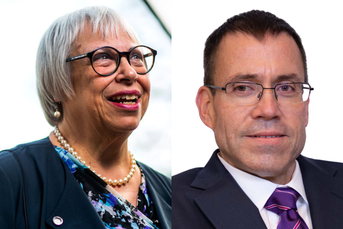How ‘baby bonds’ could reshape racial wealth inequality

One proposal could reduce the wealth gap, but differences in home equity complicate things
Wealth discrepancies between white and Black families in the U.S. have not changed since at least 1962. One way to help change that would be a government-funded “baby bond” program.
The concept involves providing publicly funded accounts to children in lower-income families and letting them tap into the savings when they turn 18 for uses including education and housing. Race is not a factor in those proposed programs, but black and Latino children would benefit most, proportionally, as the contributions to the accounts would vary based on income or wealth, according to a policy report this week from Morningstar Inc.
Such programs could be highly effective, with the potential to cut the wealth gap in half, the report found.
Currently, the size of that wealth difference is staggering. Data from the 2019 Survey of Consumer Finances show a median household wealth for white families of about $188,000, compared with $36,000 among Latino families and $24,000 for Black families, the Morningstar report noted.
One baby-bond initiative was introduced in companion legislation in the House and Senate last year, though the measures have been stuck in committee. The bills were sponsored by Sen. Cory Booker, D-N.J., and Rep. Ayanna Pressley, D-Mass.
That proposed program, which Morningstar used to guide its research, would fund accounts with $1,000 and make subsequent annual contributions of up to $2,000, varying based on a family’s income.
“If the program described in [the legislation] had been in place over the past 25 years, we estimate half of all kids in America would have a baby bond account balance of around $13,700 at 18, while nearly one-fourth would have an account balance of more than $28,400, in real dollars, assuming real returns of 1% annually,” the report stated. “While the program does not consider race, Black children would have a median account balance of $27,500, Hispanics $19,800, and whites just $7,100.”
Excluding home equity, a baby-bond program would cut the gap in median wealth between Black and white families from the current level of 91% down to 25%, Morningstar found. The difference in median wealth per minor child, including home equity, would close less dramatically, going from 96% to 56% between white and Black families, according to the report. And including home equity in the comparison for families shows a smaller effect on the wealth gap — it would go from about 94% to 71%, the report notes.
The effect that home equity has on wealth and the hurdle it represents for achieving racial wealth equality means that baby-bond programs would benefit from expansions of 529 college savings plans, according to the paper. Automatic enrollment in 529s could boost assets for college-bound children and would add to baby-bond assets, which could also be used for education costs or to pay for a house.
“As baby bonds are, by design, invested without risk, families could potentially take more investment risk in a 529, secure in the knowledge they would have a baby bond to fall back on when it came time to pay for college,” the report stated.
Currently, wealthier families see much more benefit from participating in 529s, Morningstar’s paper noted.
“The tax incentives in these plans almost exclusively benefit affluent families,” according to the report. “Lower-income families are generally exempt from income tax or capital gains tax, so they see no benefit from this incentive.”
LONG-TERM CONSEQUENCES
A reduction in racial wealth inequality could have implications for retirement security. Numerous studies have pointed to racial disparities in financial retirement risk, including a 2018 report from the Center for Retirement Research at Boston College. That report found 50% of all households with people ages 30 to 59 face a high risk of not being able to maintain their standard of living in retirement. That risk was greatest among Latino households, at 61%, compared with 54% of Black households and 48% of white households, according to CRR.
Much of that difference is attributable to home equity, which can be used for income in retirement, the report found. The median net home value for white families in 2016 was $86,000, compared with $49,000 among Black families and $65,000 for Latino families, according to CRR.
Learn more about reprints and licensing for this article.








